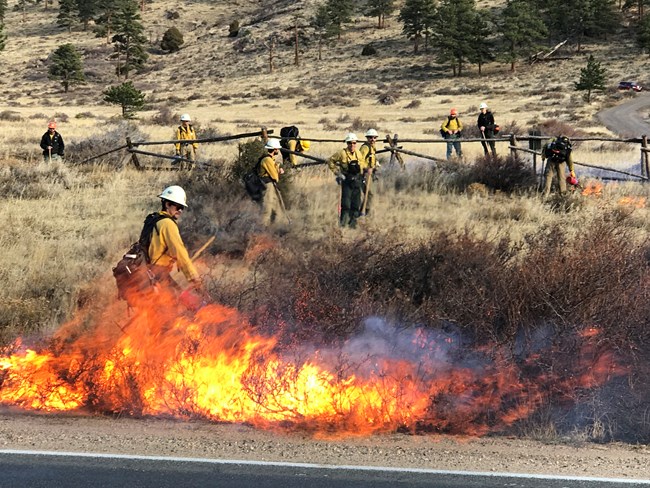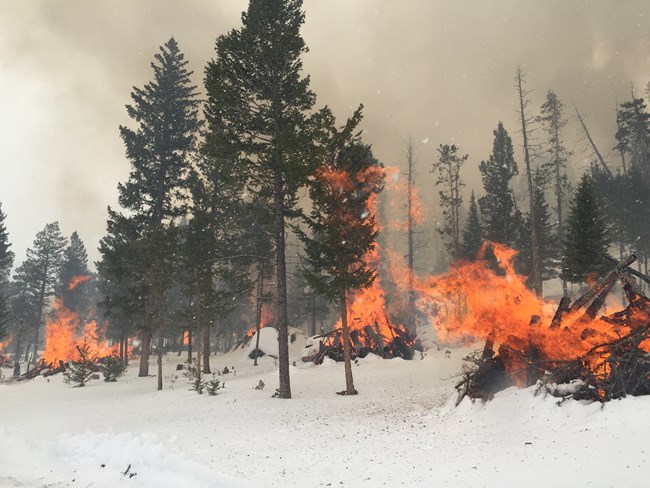|
Rocky has a large wildland-urban interface (WUI), meaning a substantial portion of the park’s border meets communities and infrastructure. Reducing risks for firefighters and the public is the main goal for fire managers. They reach this goal by conducting fuels treatments, including prescribed fires and mechanical treatments. Goals
Methods
NPS photo Prescribed FiresA prescribed fire – also called a “prescribed burn” or “controlled burn” – is the intentional ignition of fire by fire managers. Prescribed fires are an important tool used to reach certain management objectives. In Rocky, these planned burns are used to reduce the number of fuels in parts of the park close to infrastructure, areas with high visitation, and surrounding communities. Before starting a prescribed fire, managers carefully consider the safety of the public and fire staff, weather, and the probability of meeting the burn objectives. Prescribed burns of surface fuels, called broadcast burns, may be used to reach several objectives. Roadside shrubs may be burned to decrease the flame height, making controlling fire from the road more effective. Reducing ladder fuels, such as low lying branches and shrubs growing beneath ponderosa pines, reduces the risk of treetops catching fire. Prescribed burning of dead and downed fuel can decrease the duration of wildfire due to fuel’s potential to smolder for extended periods. 
NPS photo Mechanical TreatmentsThe ongoing mechanical treatments throughout the park focused near infrastructure reduce fuel loads in an attempt to slow the spread of wildfire and decrease its duration. For these treatments, slash piles are built from thinning of forest vegetation and hazard-tree mitigation, including beetle-killed trees. Piles are burned in winter when weather conditions are favorable. Over 3,000 slash piles were burned in the winter of 2018-2019.
To the best of their ability, fire managers attempt to mimic the effects of a natural fire during prescribed fires. Accomplishing this goal is difficult because fire managers use high amounts of caution to reduce the risk of an escaped prescribed fire. Additionally, fire managers must adhere to regulations regarding smoke impacts on human health and safety. Fuels treatments are not always a guarantee that fires will stay within park boundaries. Rapid changes in weather conditions can cause a rapid change in fire behavior. Fire preparedness should be a top priority for all communities near fire-adapted ecosystems. |
Last updated: September 14, 2019
